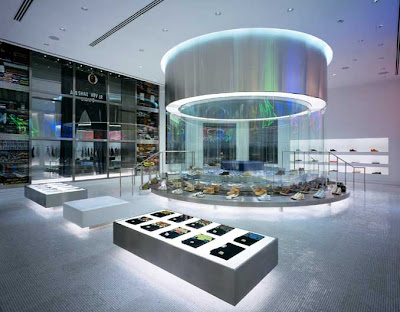Back in February, we had the pleasure of Dare Jennings attend our conference to share some of his ideas and experiences. Dare Jennings was the creator of the hugely successful Australian cult brand, Mambo.
This week, with thanks to AGDA and their Designer Dinner series, I (and about 9 others) had the opportunity to have dinner with Carby Tuckwell – Dare's business partner in their latest cult brand, Deus Ex Machina. Carby's previous life was as a Designer and Art Director, and he is now flexing his creative muscle for his own 'label' (I'm using that term very loosely). For a table full of agency designers, this informal chat over good food and wine, with a designer-turned-successful-entrepreneur, was inspiring.
Although (by his own admission) Carby has been blessed with a fairly decent business partner.

Dare Jennings founded Mambo. An anti-establishment brand born in 1982. Dare's love of the surf was shared with many at the time, but surfers were not yet stereotyped into a mould of what they looked like or how they behaved. There were obviously some perceptions, but Dare wanted his brand to stand for so much more. Even the name Mambo was selected because of its wider connotations to music, art and politics. A sub-culture identity that didn't take itself seriously, wasn't afraid to take risks, collaborated with other people and industries, but never used an advertising agency. Mambo embodied an attitude at the grass roots level. Some might say 'exploiting the youth', but they were probably craving some identity at the time. Mambo has since lost it's way under corporate control, and Dare exited at an opportune time.

A timely exit: Mambo designed the 2000 Australian Olympic uniform, reaching it's peak of popularity and awareness as an Iconic Australian brand. But was this also the beginning of it's demise? Is this the moment where commercialisation crushed the brand and what it stood for? Who knows. But this is when Dare Jennings decided to move on (with very full pockets).
Now he's teamed up with Carby to create Deus Ex Machina. Another brand wreaking of authenticity and irreverence. Inspired by a Japanese sub-culture where biking enthusiasts customise their machines, Deus offers contemporary, custom-built, collectable motorcycles to the Australian (and Global) market. A unique, non-mass-market brand idea that has now successfully extended to clothing, bicycles and hospitality.




Just like Mambo, the creative authenticity shines through in every expression of the brand – from their brochures, website and retail space to their clothing and motorcycle designs. And as an authentic experience, there's something special about sipping a coffee in the Deus cafe, watching real mechanics working on real bikes, hearing the roar of an engine and catching a scent of oil in the air. And in amongst this grass roots environment, there's the beautiful, museum-like showpieces.
At it's core, Deus Ex Machina taps into the idea of individualism and self expression (not so easily achieved in today's mass-marketing, brand savvy environment). A creatively authentic brand that stands for more than motorcycles, and engages consumers with so much more than a corporate logo. Their followers are excited and loyal, and can get involved on a number of levels. And their most famous follower, Orlando Bloom, is hoping to start the LA chapter.
Dare has done what he does best, pioneering another unique Australian cult brand. And Carby Tuckwell has created a visual language for the brand, and is having fun applying it wherever consumers will let him. http://www.deus.com.au/































































